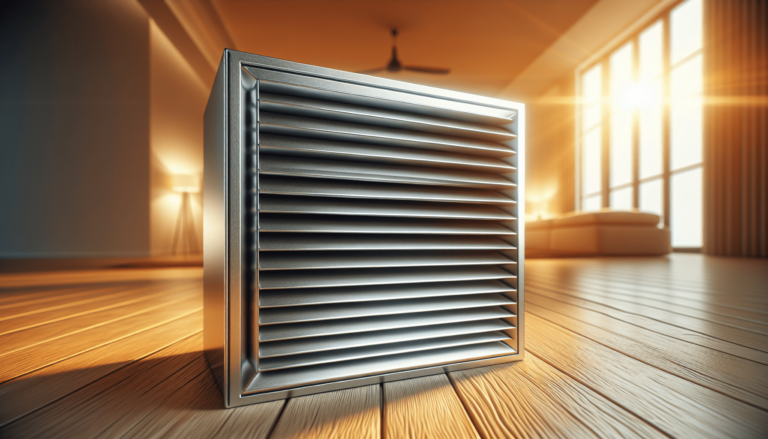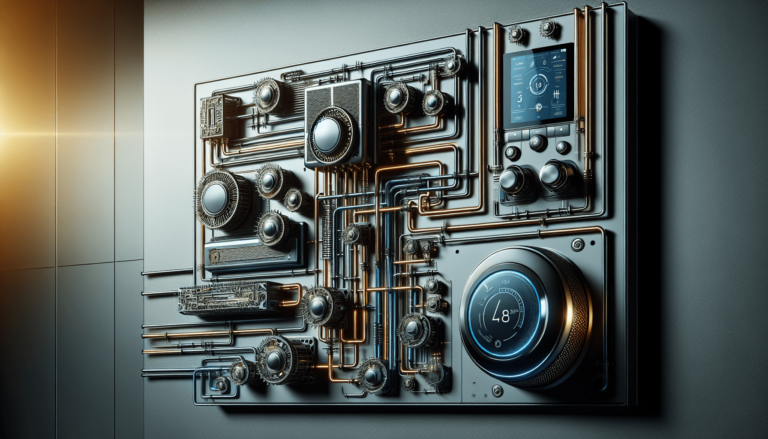

HVAC Services
Get Professional Repairs From The Area's Trusted HVAC Technicians. Ask About Our Services! We Offer Professional Heating & Cooling System Repairs And Guarantee Long-Lasting Results.
Got Question? Call us: (850) 678-2665Financing
The Importance of HVAC Safety Practices
Discover the crucial role of HVAC safety practices in the industry. Learn how to prioritize safety for technicians and customers, minimize accidents, protect equipment, ensure efficient performance, reduce energy consumption, comply with regulations, maintain indoor air quality, minimize liability risks, and promote professionalism and reputation. Contact Tempacure Heating and Air Conditioning for more information.
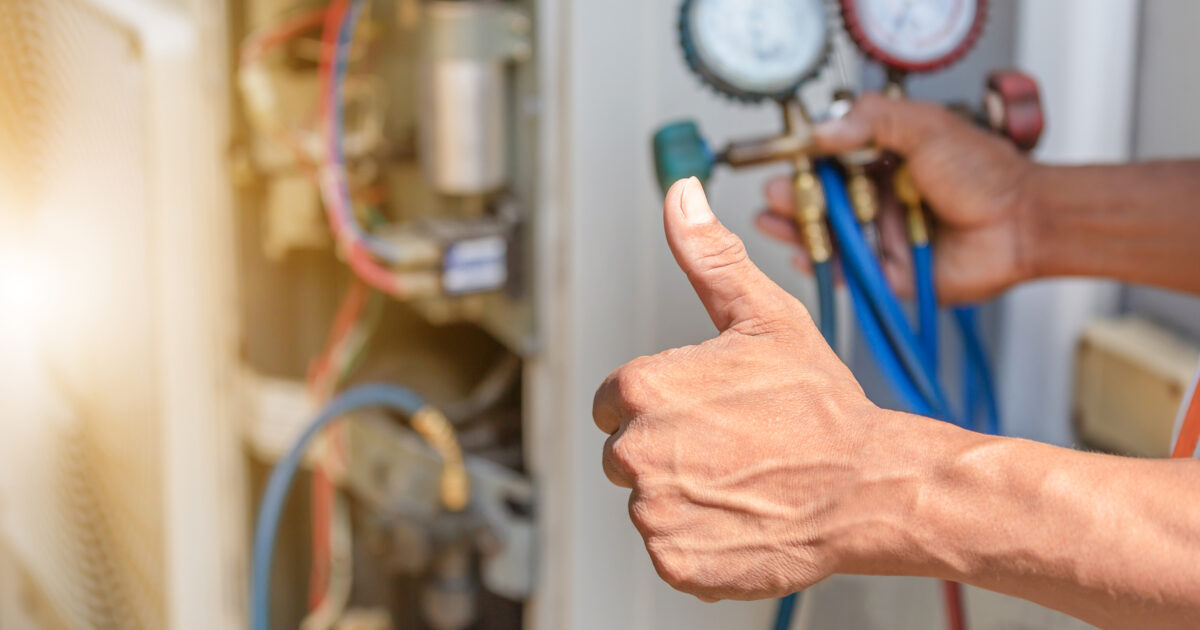
In “The Importance of HVAC Safety Practices,” you will discover the crucial role that proper safety measures play in the HVAC industry. With the rising demand for heating, ventilation, and air conditioning services, it is essential for technicians to prioritize safety at all times. Whether it is performing maintenance, repairs, or installations, understanding and implementing the best practices for HVAC safety is vital to ensure the well-being of both technicians and customers. By adhering to these guidelines, HVAC professionals can confidently provide reliable and efficient HVAC services while minimizing the risk of accidents or injuries. To learn more about HVAC safety practices, contact Tempacure Heating and Air Conditioning, the leading HVAC service provider in Niceville, FL, and the surrounding area.
Importance of HVAC Safety Practices
When it comes to HVAC (Heating, Ventilation, and Air Conditioning) systems, safety should always be a top priority. HVAC safety practices are crucial for several reasons, ranging from preventing accidents and injuries to safeguarding occupant health and comfort. By implementing and following proper safety protocols, you can not only protect yourself and your team but also ensure the efficient functioning and longevity of your equipment. Let’s take a closer look at the various aspects that make HVAC safety practices so essential.
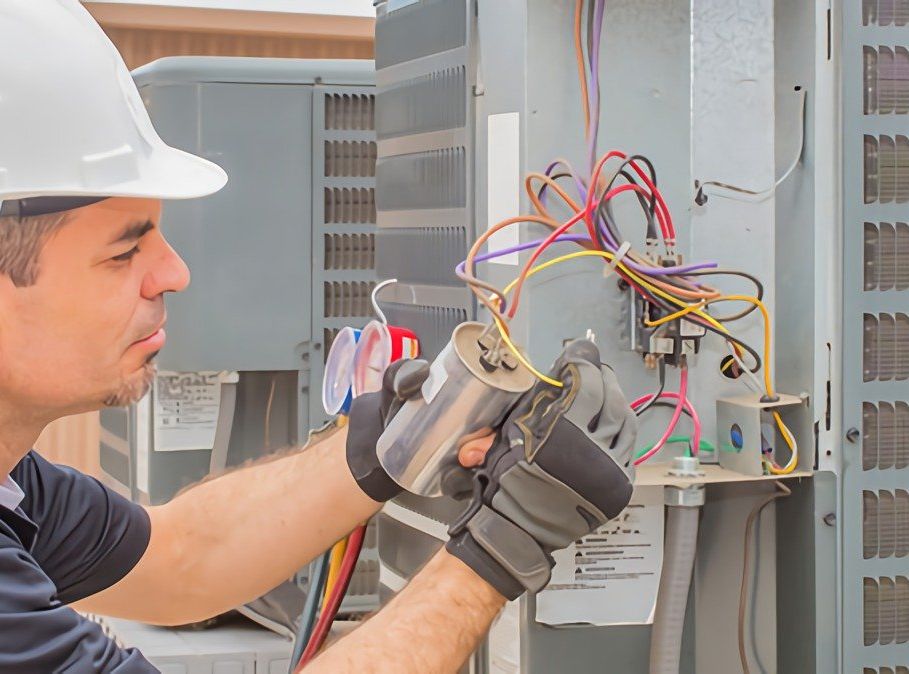
This image is property of www.rsi.edu.
1. Preventing Accidents and Injuries
One of the primary reasons for implementing HVAC safety practices is to prevent accidents and injuries. HVAC systems involve working with electricity, refrigerants, and other potentially hazardous elements. Understanding the potential hazards associated with HVAC systems is the first step in preventing accidents. By identifying these hazards, such as electrical shock, burns, and chemical exposure, you can take the necessary precautions to minimize the risk of accidents and injuries.
Proper training for safe equipment operation is crucial in reducing accidents. HVAC technicians should receive comprehensive training on how to operate and maintain different types of equipment safely. This includes understanding the proper techniques and procedures for handling and storing refrigerants, which can be harmful if leaked or mishandled.
Implementing lockout/tagout procedures is another essential safety practice. Lockout/tagout procedures ensure that equipment is properly shut down and de-energized before any maintenance or repair work is conducted. This helps prevent accidental startup and protects technicians from injuries caused by moving parts or electrical shock.
Wearing appropriate personal protective equipment (PPE) is also vital to minimize the risk of accidents and injuries. PPE, such as safety glasses, gloves, and hard hats, provide an additional layer of protection for technicians when working with potentially hazardous materials.
2. Protecting Equipment and Property
Proper HVAC safety practices not only protect individuals but also help safeguard valuable equipment and property. Regular maintenance and inspections are crucial in ensuring the longevity and optimal performance of HVAC systems. By identifying and addressing potential issues in a timely manner, you can prevent costly breakdowns and extensive damage to the equipment.
Proper installation practices are also essential to protect equipment and property. Improper installation can lead to system inefficiencies, premature equipment failure, and even safety hazards. Following manufacturer guidelines and industry best practices during installation helps ensure that the system functions correctly and safely.
Preventing electrical hazards is another critical aspect of protecting equipment and property. Faulty electrical connections or outdated wiring can pose serious safety risks and potentially damage the HVAC system. Regular inspections and maintenance of electrical components can help identify and rectify any electrical hazards before they cause harm or damage.
Fire prevention measures should also be incorporated into HVAC safety practices. HVAC systems involve the use of heat, electrical components, and combustible materials. Regular maintenance, cleaning, and inspections can help prevent the buildup of dust, debris, and flammable substances that can potentially lead to a fire.
3. Ensuring Efficient System Performance
Proper HVAC safety practices play a vital role in ensuring the efficient performance of HVAC systems. An optimized and well-maintained system not only provides better comfort but also reduces energy consumption and lowers utility costs. Here are some key practices to ensure the efficient performance of HVAC systems:
Regular filter replacement is crucial for maintaining system efficiency. Clogged or dirty filters restrict airflow and force the system to work harder, leading to decreased efficiency and higher energy consumption. By regularly replacing filters, you ensure that the system can function optimally.
Cleaning coils and air ducts is another essential maintenance practice. Over time, dirt, dust, and debris can accumulate on coils and within ductwork, hindering airflow and reducing system efficiency. Regular cleaning helps remove these contaminants and allows the system to distribute conditioned air effectively.
Inspecting and repairing ductwork is crucial for maintaining efficient system performance. Leaky ducts can result in conditioned air loss and places additional strain on the HVAC system. By conducting regular inspections and promptly repairing any leaks or damaged ducts, you can ensure that the system operates efficiently.
Optimizing system controls is an important aspect of efficient performance. Proper calibration and programming of thermostats, sensors, and control systems help maintain optimal temperatures and reduce energy waste. Regularly checking and adjusting these controls as needed can significantly improve system efficiency.
Balancing airflow throughout the system is essential for efficient performance. Proper airflow ensures that conditioned air reaches all areas efficiently, preventing hot or cold spots. HVAC technicians should inspect and adjust dampers and registers to achieve balanced airflow and maximize system efficiency.
4. Reducing Energy Consumption
reducing energy consumption is not only beneficial for the environment but also helps save on energy costs. Implementing various energy-saving practices can significantly lower the environmental footprint and contribute to long-term sustainability. Here are some HVAC safety practices that can help reduce energy consumption:
Proper equipment sizing and placement are essential for energy efficiency. Oversized or undersized equipment can lead to inefficiencies and increased energy consumption. By accurately sizing the HVAC system based on the specific needs of the space, you can avoid unnecessary energy waste.
Energy-efficient system design is crucial in minimizing energy consumption. Incorporating features such as variable-speed drives, high-efficiency components, and smart controls can greatly improve energy efficiency. By investing in energy-efficient systems, you can reduce energy consumption without compromising comfort.
Utilizing programmable thermostats is another effective energy-saving practice. Programmable thermostats allow you to adjust temperature settings based on occupancy patterns, resulting in energy savings during periods of low or no occupancy. This ensures that energy is not wasted by conditioning spaces unnecessarily.
Implementing zoning practices can significantly reduce energy consumption. Zoning allows for individual temperature control in different areas of a building. By only conditioning the occupied zones, you can avoid wasting energy on unoccupied spaces.
Energy recovery ventilation is an energy-saving strategy that utilizes the exhaust air to precondition incoming fresh air. This helps transfer heat or coolness from outgoing air to incoming air, reducing the load on the HVAC system and improving energy efficiency.
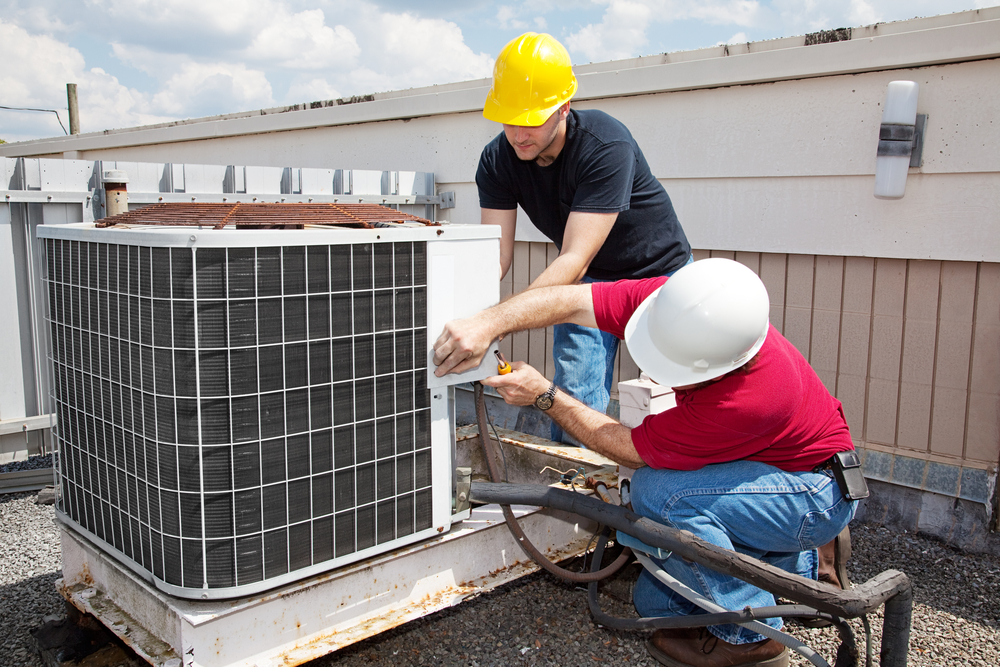
This image is property of www.ftccollege.edu.
5. Compliance with Regulations and Standards
Compliance with regulations and industry standards is an important aspect of HVAC safety practices. Familiarizing yourself with local codes and regulations ensures that you operate within the legal framework and meet all necessary requirements. Adhering to industry standards, such as those set by organizations like ASHRAE (American Society of Heating, Refrigerating, and Air-Conditioning Engineers) and ACCA (Air Conditioning Contractors of America), helps ensure that your work meets recognized quality standards.
Licensing and certification requirements should be a priority when it comes to HVAC safety practices. The necessary licenses and certifications provide assurance that you have the knowledge and skills required to perform HVAC work safely and effectively.
Documentation and record-keeping are crucial for compliance and accountability. Maintaining detailed records of equipment maintenance, inspections, repairs, and installations helps demonstrate adherence to safety protocols and provides a valuable reference for future work.
6. Maintaining Indoor Air Quality
Maintaining good indoor air quality is essential for the health and well-being of building occupants. HVAC systems play a significant role in this regard, as they are responsible for circulating and filtering the air. Here are some HVAC safety practices to ensure healthy indoor air quality:
Proper ventilation and air circulation are essential in maintaining indoor air quality. HVAC systems should be designed to bring in fresh air and remove stale air, ensuring a constant supply of clean air.
Filtration systems and air purification technologies can significantly improve indoor air quality. High-quality filters and air purifiers help remove dust, allergens, pollutants, and other harmful particles from the air, promoting a healthier indoor environment.
Controlling humidity levels is crucial for preventing the growth of mold and other contaminants. Excessive humidity can lead to mold growth, which can negatively impact both air quality and the integrity of the building structure. Proper dehumidification measures should be in place to maintain optimal humidity levels.
Eliminating mold and contaminants should be a priority when it comes to indoor air quality. Regular inspections and prompt remediation of any mold or contamination issues help ensure a safe and healthy indoor environment.
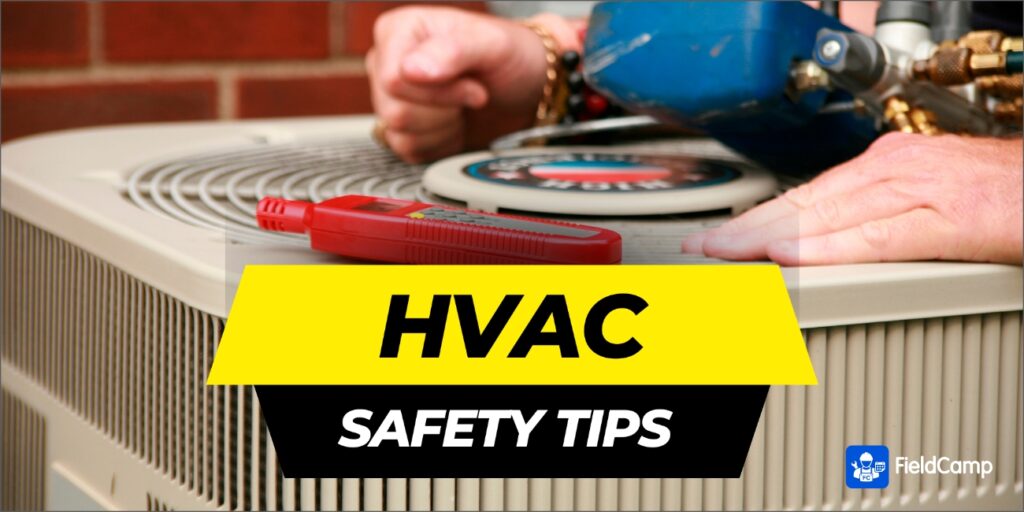
This image is property of www.fieldcamp.com.
7. Minimizing Liability Risks
Minimizing liability risks is an important consideration when it comes to HVAC safety practices. By adhering to occupational safety guidelines, ensuring safe work practices, and taking steps to protect against legal claims, you can minimize liabilities and protect your business. Here are some key practices to minimize liability risks:
Adhering to occupational safety guidelines is vital in minimizing liability risks. Following the guidelines set by regulatory bodies, such as OSHA (Occupational Safety and Health Administration), helps ensure that you are providing a safe workplace for your employees.
Ensuring safe work practices is another essential aspect of minimizing liability risks. This includes providing proper training, enforcing safety protocols, and regularly monitoring and evaluating safety practices.
Protecting against legal claims involves understanding potential areas of risk and taking proactive measures to mitigate them. This may include incorporating safety clauses in contracts, obtaining appropriate insurance coverage, and maintaining proper documentation of work performed.
Insurance coverage and risk management are essential in minimizing liabilities. Adequate insurance coverage protects your business against potential accidents, injuries, property damage, and legal claims. Implementing robust risk management practices, such as regular inspections and maintenance, can further minimize liabilities.
8. Promoting Professionalism and Reputation
Adhering to HVAC safety practices not only demonstrates professionalism but also helps build a positive reputation for your business. By providing high-quality service, maintaining clear communication with clients, continuing education and training, and receiving positive customer reviews and recommendations, you can establish yourself as a trusted HVAC professional. Here are some key practices to promote professionalism and enhance your reputation:
Providing high-quality service is crucial in promoting professionalism and earning the trust of your clients. This includes delivering on your promises, ensuring proper installations and repairs, and addressing customer concerns promptly and effectively.
Clear communication with clients is essential in maintaining a positive working relationship. Keeping clients informed about project timelines, costs, and any potential safety considerations helps build trust and ensures a successful HVAC project.
Continued education and training are important in staying up-to-date with the latest industry advancements and safety practices. By investing in professional development, you can expand your knowledge base and enhance your skills, ultimately benefiting your clients and your business.
Positive customer reviews and recommendations play a significant role in building a reputable HVAC business. Satisfied customers are more likely to spread positive word-of-mouth and refer you to their associates. Ensuring customer satisfaction through excellent service and safety practices can lead to a strong and respected reputation within the industry.
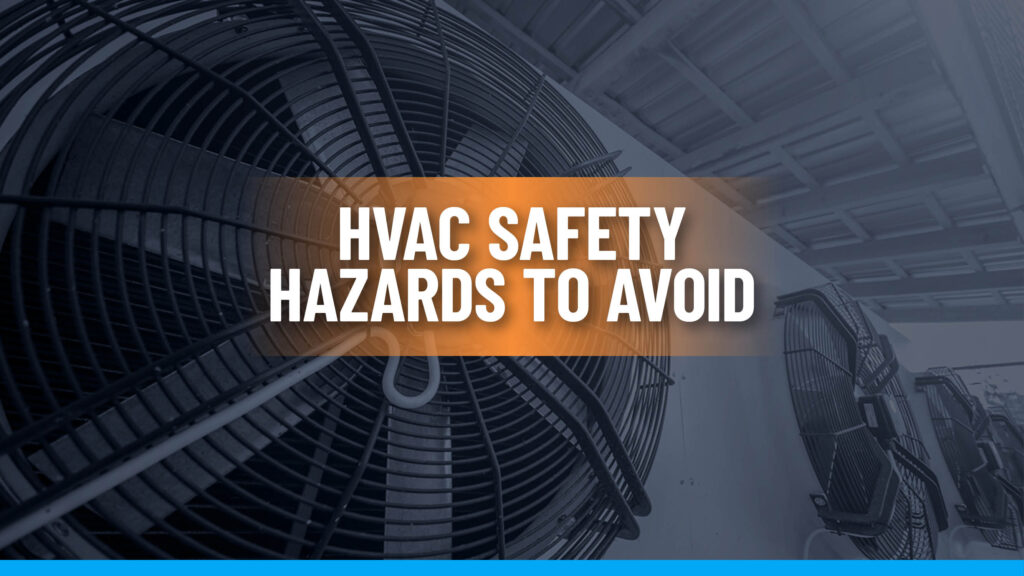
This image is property of images.ctfassets.net.
9. Enhancing Environmental Sustainability
HVAC safety practices can also contribute to enhancing environmental sustainability. By implementing energy-saving measures, reducing pollutants, and adopting environmentally friendly practices, you can minimize the environmental impact of HVAC systems. Here are some key practices to enhance environmental sustainability:
Opting for energy-efficient equipment and practices significantly reduces the carbon footprint of HVAC systems. Investing in high-efficiency units, properly sizing equipment, and implementing energy-saving strategies can result in substantial energy savings and reduced greenhouse gas emissions.
Reducing pollutants emitted by HVAC systems is crucial for environmental sustainability. By using low-emission refrigerants and ensuring proper maintenance and leak detection, you can prevent harmful substances from entering the atmosphere and contribute to a cleaner environment.
Adopting environmentally friendly practices, such as recycling materials and using eco-friendly cleaning products, further enhances sustainability efforts. Managing waste responsibly and incorporating sustainable practices throughout your HVAC operations demonstrates your commitment to environmental stewardship.
10. Safeguarding Occupant Health and Comfort
Ultimately, the primary goal of HVAC safety practices is to safeguard the health and comfort of building occupants. HVAC systems play a critical role in maintaining comfortable indoor temperatures, controlling humidity levels, and filtering out airborne contaminants. By implementing proper safety practices, you can ensure that occupants are provided with a safe, healthy, and comfortable indoor environment. Here are some key practices in this regard:
Adequate temperature control is paramount in ensuring occupant comfort. HVAC systems should be properly sized and designed to provide optimal temperature regulation, keeping occupants comfortable regardless of external weather conditions.
Protection against airborne allergens is essential for occupant health. HVAC systems equipped with effective air filtration systems can help remove allergens, such as pollen, dust mites, and pet dander, from the indoor air, providing relief for allergy sufferers.
Minimizing exposure to harmful substances is critical for occupant health. Proper maintenance of HVAC systems ensures that noxious gases, such as carbon monoxide, are effectively vented outdoors and not allowed to accumulate indoors.
Preventing equipment malfunctions and breakdowns is key in maintaining occupant comfort. HVAC safety practices, such as regular maintenance and inspections, help identify and address potential issues before they result in system failures or discomfort for occupants.
In conclusion, HVAC safety practices are essential for preventing accidents and injuries, protecting equipment and property, ensuring efficient system performance, reducing energy consumption, complying with regulations and standards, maintaining indoor air quality, minimizing liability risks, promoting professionalism and reputation, enhancing environmental sustainability, and safeguarding occupant health and comfort. By incorporating these practices into your HVAC operations, you can create a safe and healthy indoor environment while maximizing the longevity and efficiency of your HVAC systems. Remember, safety should always be the top priority in the HVAC industry. Happy and safe HVAC work!
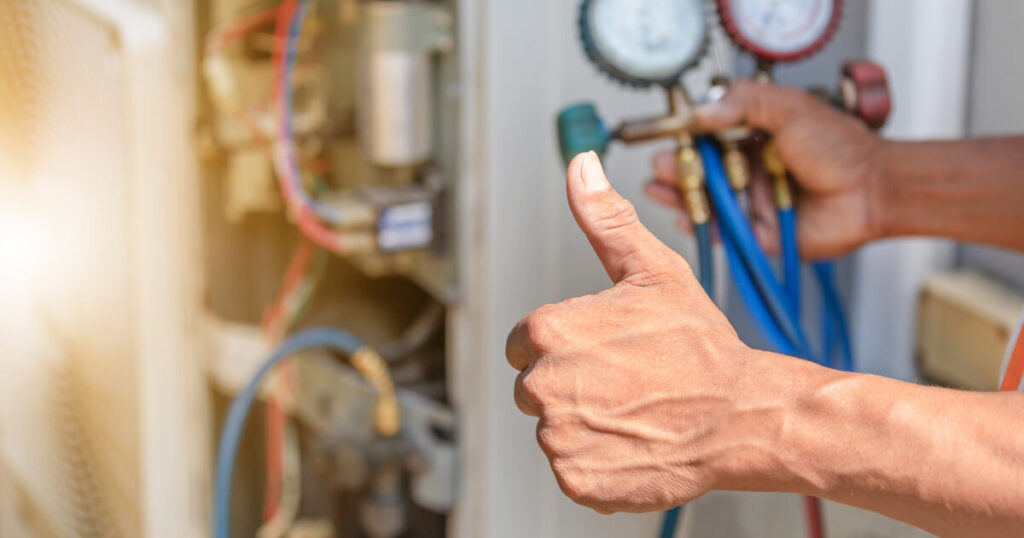
This image is property of intercoast.edu.


